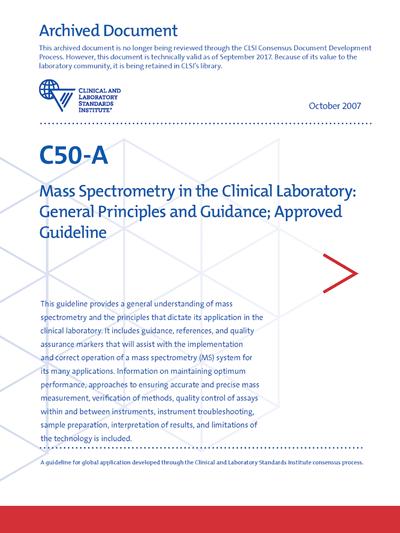CLSI C50
Mass Spectrometry in the Clinical Laboratory: General Principles and Guidance, 1st Edition
This guideline provides a general understanding of mass spectrometry and the principles that dictate its application in the clinical laboratory. It includes guidance, references, and quality assurance markers that will assist with the implementation and correct operation of a mass spectrometry (MS) system for its many applications. Information on maintaining optimum performance, approaches to ensuring accurate and precise mass measurement, verification of methods, quality control of assays within and between instruments, instrument troubleshooting, sample preparation, interpretation of results, and limitations of the technology is included.
This document is available in electronic format only.
Member price:
List Price:Details
Chairholder: Donald H. Chace, PhD
Date of Publication: October 29, 2007
Order Code PDF: CLSI C50AE
ISBN Number: 1-56238-648-4
Order Code Print: print not available
Edition: First
Pages: 112
CLSI C50 Additional Details
If interested in ordering larger quantities of this document in print, please contact us here.
A CLSI-IFCC joint project.
This archived document is no longer being reviewed through the CLSI Consensus Document Development Process. However, this document is technically valid as of September 2017. Because of its value to the laboratory community, it is being retained in CLSI’s library.

